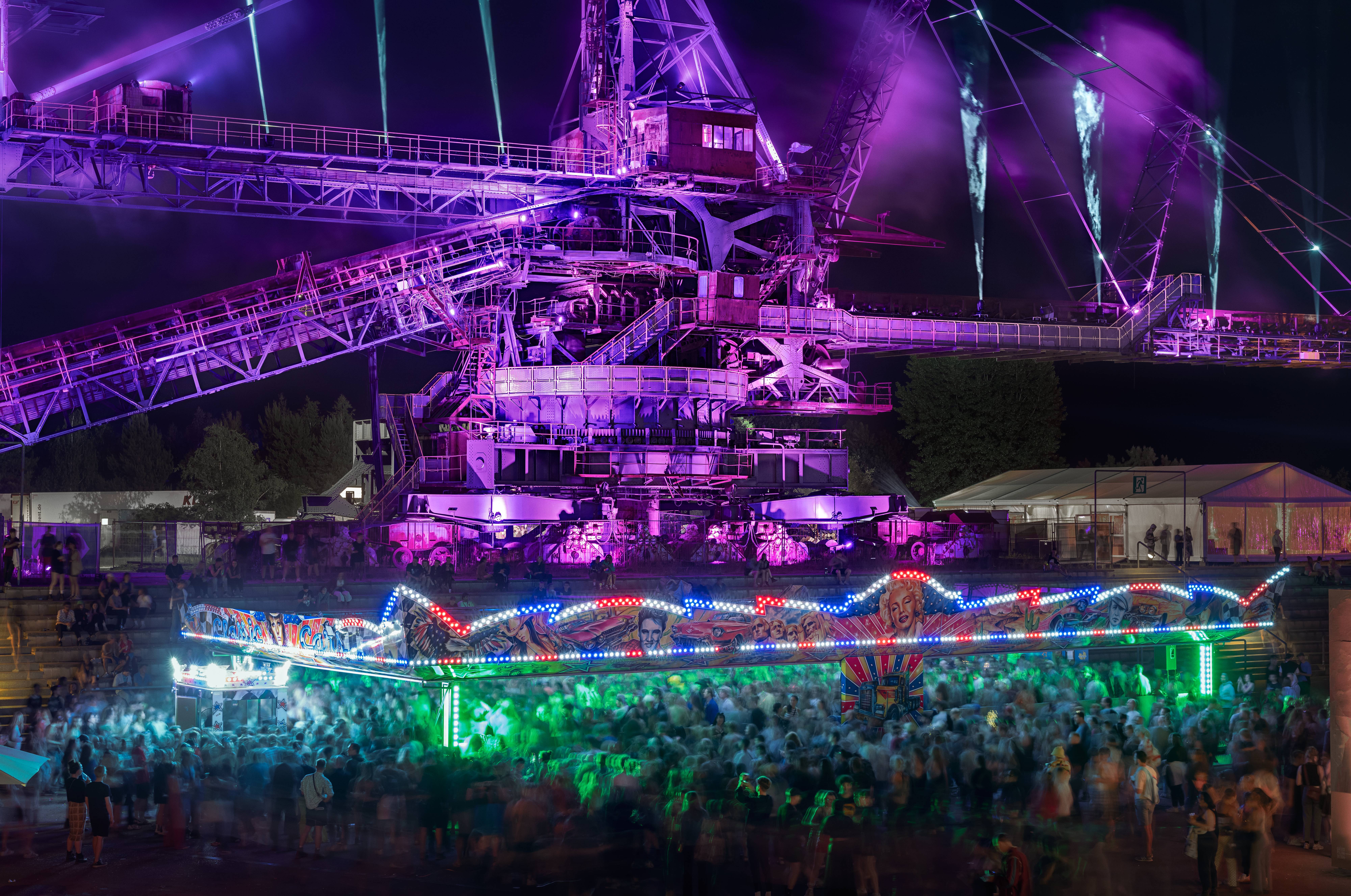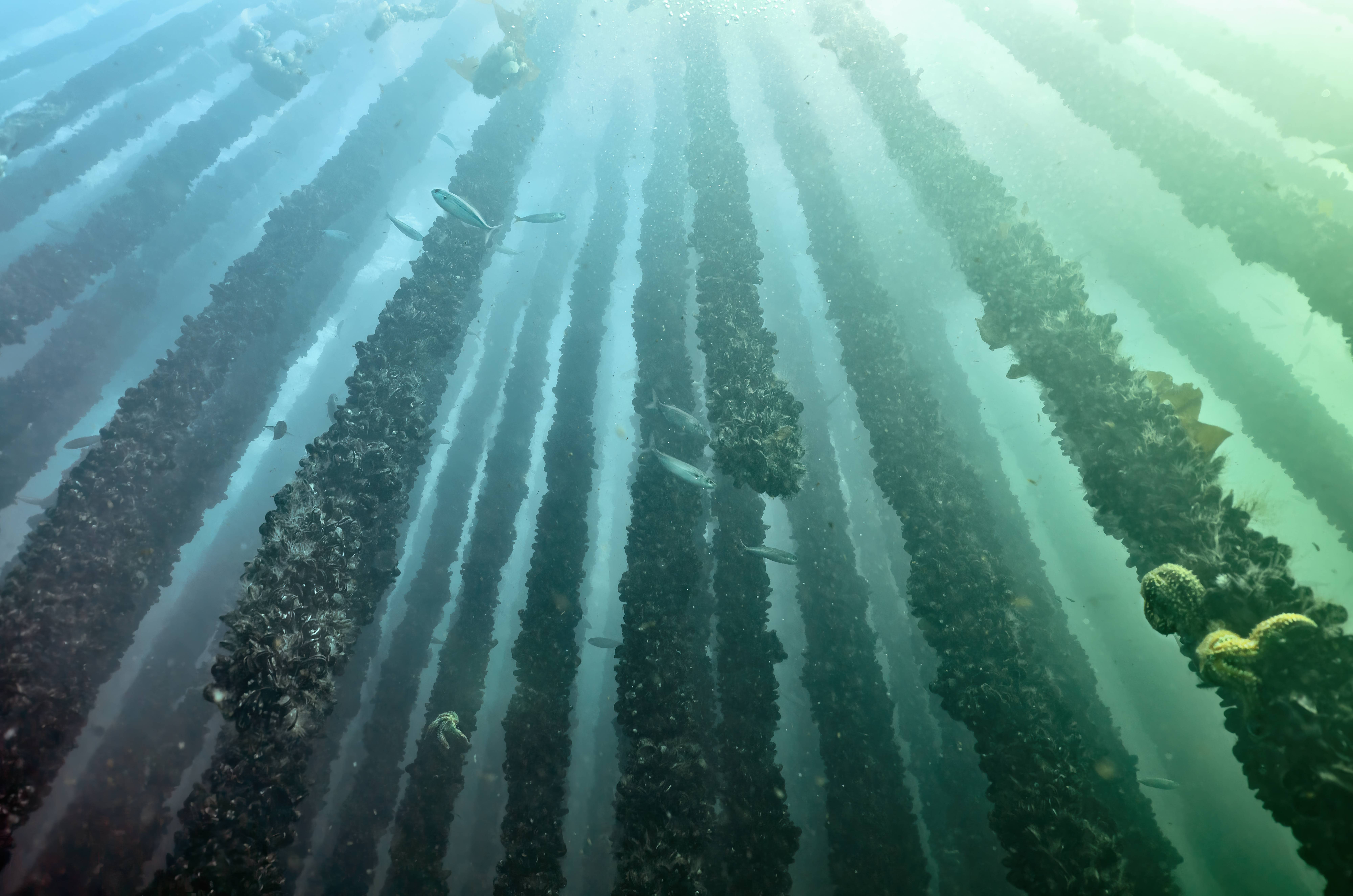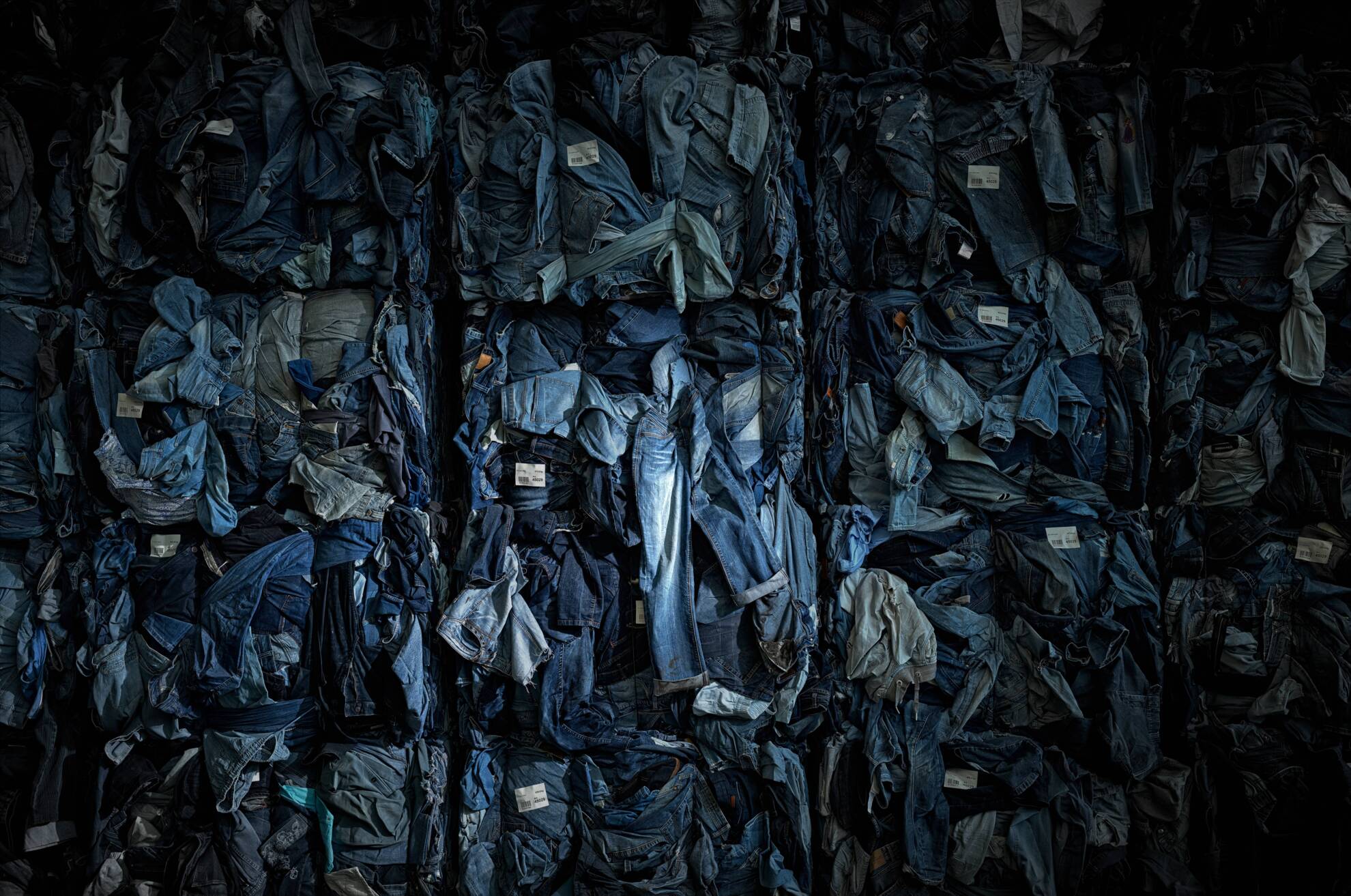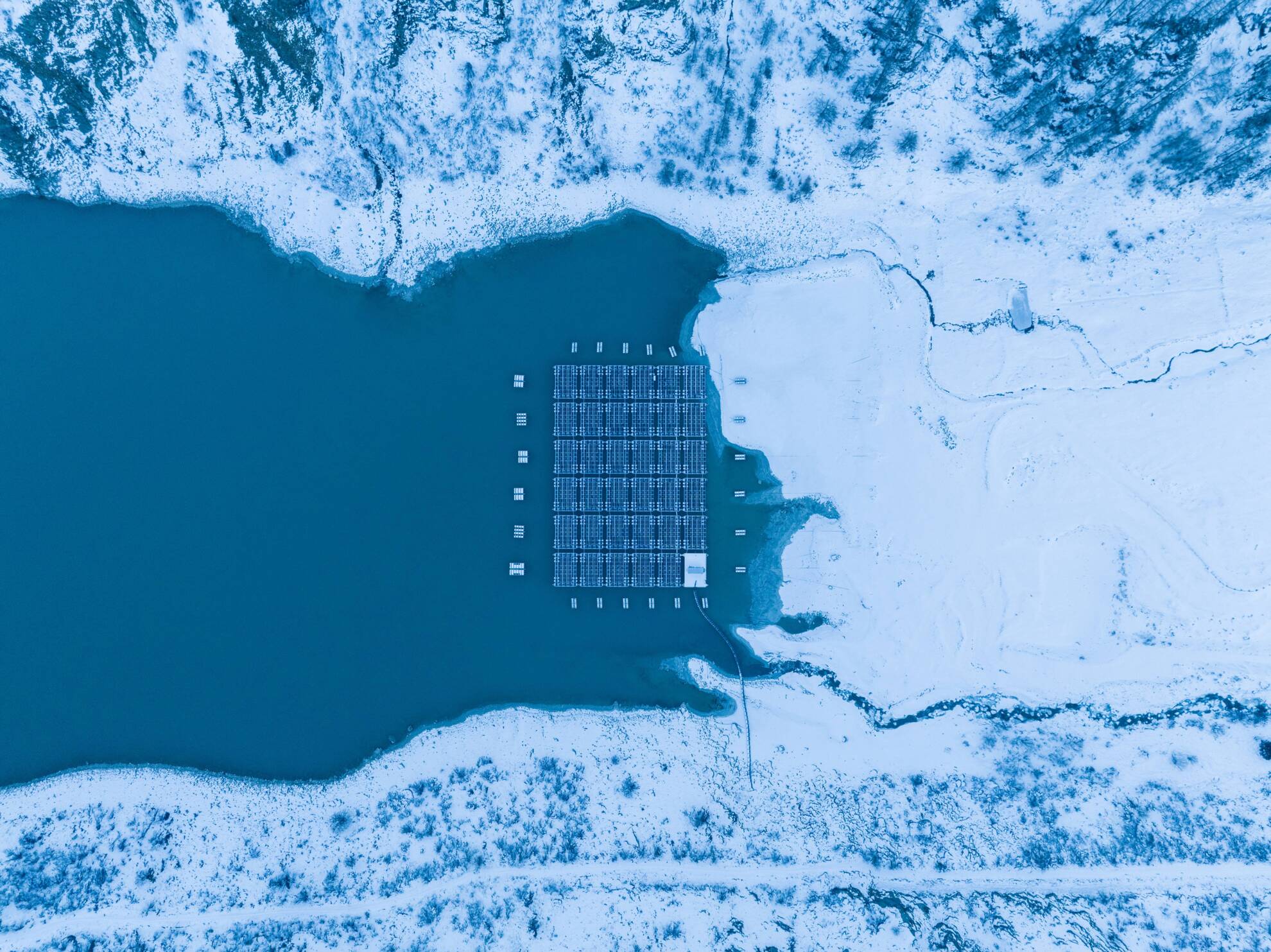Sharp focus on a circular future
Luca Locatelli’s new exhibition at Intesa Sanpaolo’s Gallerie d’Italia – Torino perfectly encapsulates a circular economy in action, providing a glimpse of a truly sustainable world.
03/01/2024
For much of the 20th century, Golpa-Nord in north-east Germany was renowned for the success of its open-cast coal mine. Today it houses a museum called Ferropolis, charting the site’s industrial past – plus a set of solar panels that generate 170,000 kilowatts of electricity a year. The complex also plays host to MELT, one of Germany’s largest electronic music festivals, an annual event powered entirely by solar energy generated in situ.
A picture of revellers dancing at MELT is among the photographs taken since 2021 by visual storyteller Luca Locatelli as part of a project dedicated to the circular economy.
Seventy works from this project are currently on view in The Circle – Solutions for a Possible Future, an exhibition at the Gallerie d’Italia –Torino, a museum run by Intesa Sanpaolo.
“Most people are aware of the environmental problems facing the planet,” Locatelli says. “Now is the time to agree upon the solutions.
“My photographs show different processes being adopted across Europe, where nature’s regenerative capacity is playing a key role in sustainable economic development.”
Locatelli’s travels took him from Iceland to Romania and many other countries, each stop seeing him capture a different example of the circular economy in action. (A circular economic model is based on reuse, regeneration and the designing out of waste. The repurposing of abandoned industrial areas like Golpa-Nord is an example. This contrasts with a linear economic model, which follows the pattern of make-use-dispose we’ve been familiar with since the Industrial Revolution.)
Locatelli’s photographs include that of an algae farm in Austria, where researchers are investigating how cultivated algae can remove carbon from the atmosphere, and a nylon plant in Slovenia where yarn is made from waste materials such as old carpets and fishing nets rather than petroleum, as is conventional.
Locatelli says one of his favourite shoots was in the saline estuary of Ría de Arousa in north-western Spain, Europe’s richest area of mussel farming. With a higher protein content than many meats and vegetable crops – plus high levels of omega-3 fatty acids and micronutrients such as iron, zinc and magnesium – shellfish are said to have the potential to mitigate many global food problems. They can be farmed both in the open sea and coastal areas, with minimal environmental impact compared to animal protein.
Intesa Sanpaolo worked with Locatelli on The Circle from its planning stage to the choice of subjects. The bank has been committed to a circular economy since 2015, when it became the first financial institution to be named a Strategic Partner of the Ellen MacArthur Foundation.
The foundation – which provided specialist support to Locatelli and curator Elisa Medde ahead of the exhibition – promotes a global switch to a circular economy.
“The Circle provides a window, a viewpoint from which to contemplate a better future,” says João Guarantani, circular design programme manager at the Ellen MacArthur Foundation. “It shows us how design and innovation – inspired by nature – are the means by which we’ll get there.
“What we need now is for these windows to become doors – doors we can open and invite others to walk through and follow along this journey. Because the key to unlocking a circular future is collaboration. No one company or industry can do this alone. The whole economy needs to work in harmony."
The Circle opened earlier this autumn and runs until 18 February 2024.
The Circle – Solutions for a Possible Future, an exhibition at the Gallerie d’Italia –Torino
The Circle – Solutions for a Possible Future, an exhibition at the Gallerie d’Italia –Torino
The Gallerie d’Italia – Torino was inaugurated in the spring of 2022. It is located on Turin’s grandest square, Piazza San Carlo, and is dedicated chiefly to contemporary photography. It occupies 10,000 square metres of exhibition space across five floors and was the fourth museum established by Intesa Sanpaolo – following venues in Vicenza, Naples and Milan.
The exhibition forms part of Intesa Sanpaolo’s Progetto Cultura, a long-term initiative aimed at improving society through cultural enrichment. Manifested in countless ventures across Italy – involving art, music, cinema, theatre and more – Progetto Cultura has no equivalent among financial institutions in Europe.
“Being Italy’s premier bank brings with it the responsibility of a vision for social and cultural growth, directed at themes such as the environment,” says Michele Coppola, Executive Director of Art, Culture and Historical Heritage at Intesa Sanpaolo, and director of the Gallerie d’Italia.
“Commissions of documentary photography showcase such an approach, and The Circle is concrete testimony to that. It is a bold project, which speaks with highly engaging images to Intesa Sanpaolo’s commitment to an economic model that defends the future of the planet. At the Gallerie d’Italia – Torino, we aim to promote knowledge and awareness of the urgent issues of our time.”





